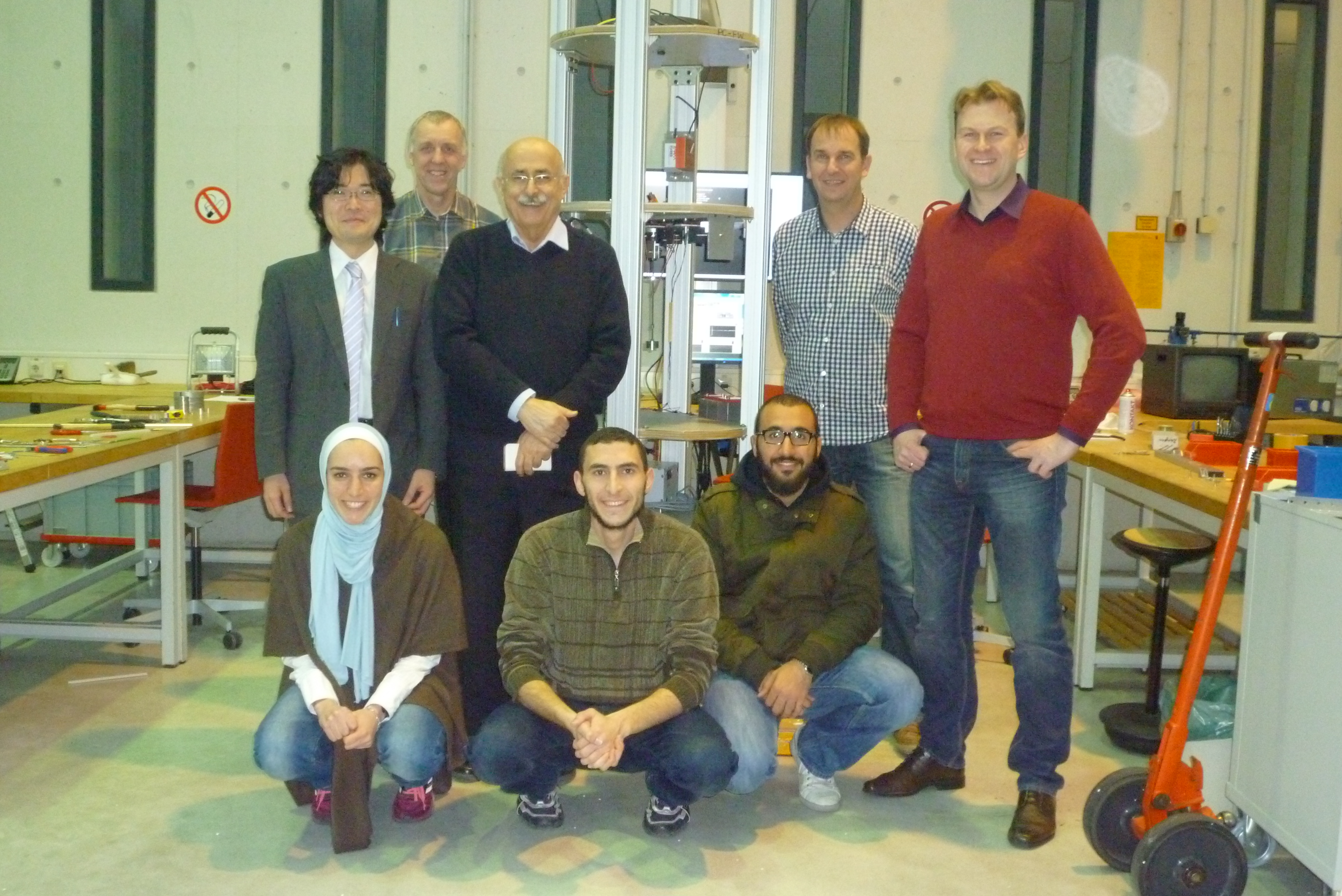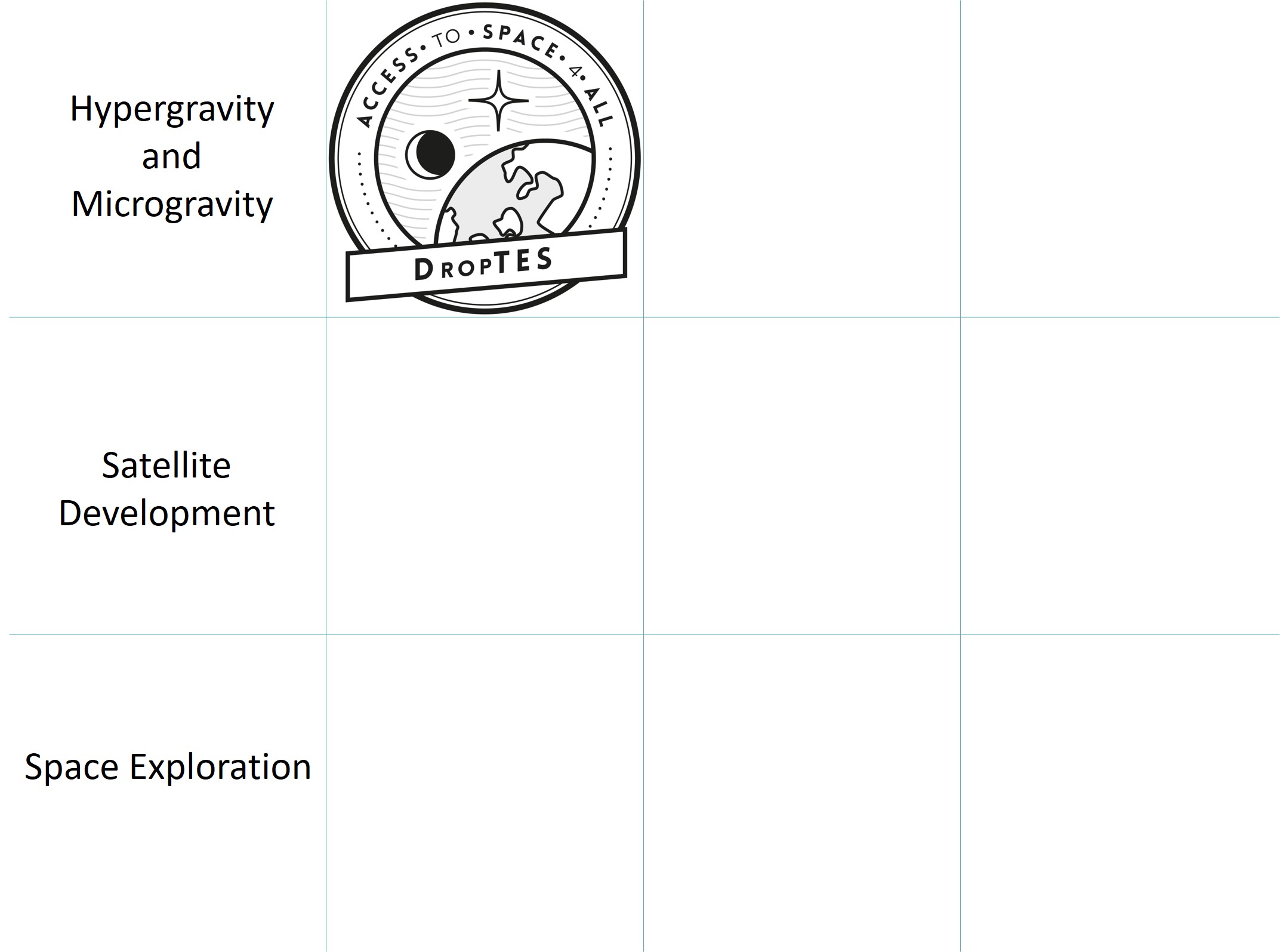German Jordanian University, Jordan

German Jordanian University team with ZARM experts. Credit: Nabil Ayoub
"The idea of the project was brought up by Ms. Farah Atour a student of the German Jordanian University. It revolved around reducing the unwanted instabilities of an electrodynamic tether, which is a long conductor wire that is attached to the satellite, which can act as a generator or motor, from its motion through the earth's magnetic field. As a result of our participation in DropTES in 2014, and in my capacity as the President of the American University of Madaba (AUM), I pursued various UNOOSA activities. In March 2016 I was invited to the United Nations/Costa Rica Workshop on Human Space Technology. At that meeting, I was introduced to the clinostat device. We manufactured a 3D clinostat device in AUM workshops. Now we use it to carry out various experiments in botany, biology among other fields to study the effect of microgravity on specific phenomena in these fields." Nabil Ayoub, Project Coordinator from German Jordanian University.
AWARDS
DropTES
The German Jordanian University was the winner of first round of DropTES opportunity in 2014.
The dynamics of electromagnetic tethers have been studied for de-orbiting, orbital boosting, and station-keeping of satellites. When a conductive tether moves through the Earth's magnetic field, the motional electromotive force generates an electric current through the tether, and the interaction between the current and the Earth's magnetic field generates a Lorentz force. However, the electromagnetic tether system has been found to be inherently unstable by itself. The main objective of the fellowship proposal is to investigate the stability of tether dynamics for satellites with electromagnetic tether systems using a Tilger, a mass damper.
News
Activities
Publications
- Al-Awaida, W.J., Sharab, A.S., Al-Ameer, H.J. et al. Effect of simulated microgravity on the antidiabetic properties of wheatgrass ( Triticum aestivum ) in streptozotocin-induced diabetic rats . npj Microgravity 6, 6 (2020).
- DropTES Final Report Tuned Mass Damping System for a Pendulum in Gravity and Microgravity Fields (2016)

